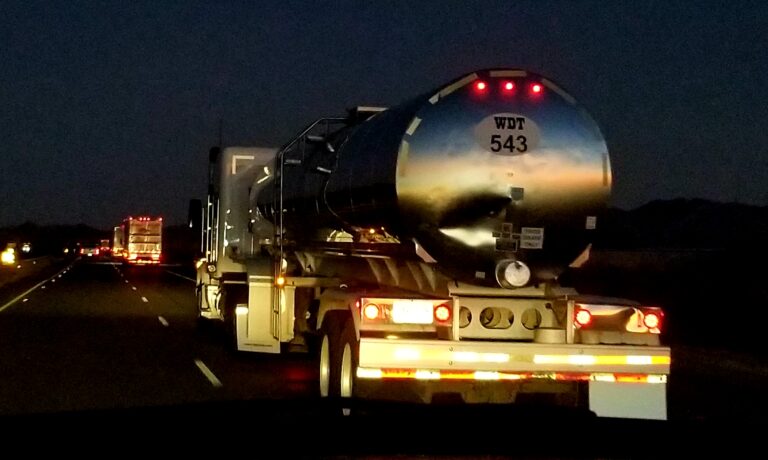Episode 75: Calloway County personal injury attorney Jeff Roberts provides his annual motorcycle safety tips and advice episode. Jeff has been a motorcyclist for many years. As an attorney who handles motorcycle accidents, in addition to car wrecks and trucking collisions, he’s seen some horrific cases. He understands that there are some pre-season actions that motorcyclists could take that may help to prevent accidents in the upcoming, riding season.
Each year, Jeff records a motorcycle safety episode. There’s no doubt that in a motorcycle collision, the motorcyclist will often sustain more injuries than the driver of the car involved. This episode is an effort to help both motorcyclists, as well as other drivers, to potentially avoid these situations. As both an injury attorney and someone who also rides motorcycles, Jeff is convinced that it’s rarely a result of the conduct of the motorcyclist, when a wreck occurs.
Examine Your Motorcycle Before Your Get on the Road
One aspect of motorcycle safety tips focuses on the condition of the motorcycle itself. As springtime gets underway, many people are getting ready to get back on their bikes. Consider, however, that your motorcycle has been sitting in the garage, or barn, for several months. This is a good time to examine your equipment to make sure it’s ready to go.
Start with your motorcycle tires. Are they properly inflated? You may need to add some air, even if they look okay. Take time to check them before going for an extended ride. How is the tread on your tires? Are there any signs of dry-rot? You need to be sure you’re ready for curves, as well as rain. If they need to be replaced, go ahead and do it now.
Are the brakes in good working condition? Do you need to have them serviced? Maybe it’s something you put off toward the end of last year. A simple inspection can make a world of difference.
Check the lights on your motorcycle. Make sure your brake lights, turn signals and headlight are all in working order. Does your headlight seem dull? Can something be replaced or cleaned to make it shine more brightly? It’s an integral part of your safety, while you’re on the road.
Remember to also inspect your helmet. Do any of the straps or other components need to be replaced?
Are the fluids at the proper levels? Again, maybe this is something you intended to do during the winter, but didn’t get around to doing. Do you see any spots where fluid has leaked? It may be time to top them off so you can ride with confidence.
Wake Up that Muscle Memory
Another activity Jeff discusses as part of his motorcycle safety tips is that you remember your bike wasn’t the only thing that took the winter off. You did as well. If you haven’t been on your bike in a while, take a little time to get your muscle memory and reaction time back to where it needs to be. Take a short trip around the neighborhood or in the local area, before you take your motorcycle out on the interstate at high speeds.
Get used to the sensitivity of your brakes and test out the stopping distances you’ll need. Again, not that you’ve forgotten, but this is a good time just to wake up those muscles you haven’t used in a couple of months.
Advice Regarding Non-Motorcyclists
Motorcycle safety tips also involve the other drivers. It’s been a while since other drivers have seen motorcycles on the road. When you approach an intersection, remember, other drives may not see you. Even though you have the right of way, take a second to ensure it’s safe to proceed through the intersection. If a collision happens, regardless of who had the right of way, you’re going to have more significant injuries.
If you’re making a left-hand turn, understand that the driver of the oncoming car might not have spotted you. Again, they haven’t seen motorcyclists on the roads for a few months. Give yourself some extra room to make it safely across the lanes.
The same caution applies to driveways. If someone is pulling out of a driveway, they may not see you or your bike. Keep alert and be prepared to either stop or find some other way of avoiding a collision.

32 Years of Experience
In Jeff’s experience, he estimates 1% or less of the motorcycle wrecks he’s handled appeared to be the fault of the motorcyclist. In his opinion, it’s actually a rare occurrence. From what he’s seen, it’s usually a result of the inattention of the person operating the car or truck.
As an attorney who’s ridden motorcycles for years, Jeff has personal experience dealing with other drivers. It’s valuable perspective. This also helps if he needs to explain the situation to a jury or insurance adjuster. It’s not just theory for Jeff.
Motorcycle Insurance Issues
This is a good time to review your motorcycle insurance policy. Jeff includes this section in his motorcycle safety tips, each year. There’s a significant difference between your motorcycle policy and your automobile policy. At the same time, maybe your life situation has changed and you need to consider increasing your policy limits.
Years ago, some motorcycle insurance policies were 9-month policies, to save motorcyclists money during the winter. If you still have this type of coverage, is your policy actually in effect?
Check your coverage. Has the premium been paid? At the same time, is this time to consider adding optional coverage. Personal Injury Protection (“PIP Coverage”), also called no-fault insurance isn’t automatically part of the coverage in a motorcycle policy. This is a significant difference compared to an automobile policy.
In a motorcycle collision, even assuming it’s the other person’s fault, without motorcycle PIP coverage, you lose the right to recover the first $10,000 of medical expenses and lost wages. This is a surprising situation for many motorcyclists.
A motorcycle policy can also offer passenger PIP. This would only cover your passenger, not you as the driver of the motorcycle. So, if you are trying to purchase motorcycle PIP coverage, make sure you understand which type of coverage you’re being quoted.
Underinsured motorist coverage is also important for a motorcyclist. This covers you in the event the at-fault driver doesn’t have enough coverage on his/her automobile policy to cover your damages. Jeff frequently sees situations in which the at-fault driver’s insurance doesn’t adequately cover the medical expenses and other damages for the motorcyclist. Remember, the minimum coverage in Kentucky for an automobile policy is $25,000. If you’ve been involved in a motorcycle collision with a car or truck, your injuries are could easily surpass $25,000 in medical expenses. Having underinsured motorist coverage provides an extra layer of protection for you.
It’s important to avoid getting this type of coverage confused with uninsured motorist coverage. Your motorcycle policy will contain some level of protection in case the at-fault driver is driving without insurance. There’s an option to increase the uninsured motorist coverage, if you want to do so. However, underinsured motorist coverage is there to help you if they have insurance, but simply not enough of it.
Road Conditions for Motorcyclists and Homeowners
Another group of motorcycle safety tips relates to to condition of the road. Hazardous road conditions are limited to the weather. If a homeowner has blown grass clippings or leaves onto the roadway, it creates a dangerous condition for motorcyclists. Freshly mowed or wet grass clippings will be very slick under the tires of a motorcycle. As homeowner, if you did this, your homeowner’s insurance policy will usually be liable to the damages.
In Episode 43, Jeff spoke extensively about injuries from road hazards. This time of the year, there can be a lot of new potholes. If a motorcyclist hits one, the results can be devastating. You might consider slowing down, a little bit, on unfamiliar roads which may not have been repaired after the winter. Keep a good lookout for hazards in the roadway.
Be mindful of areas where gravel roads (or driveways) come into contact with paved roads. While the primary road your riding on may be paved, if car and truck tires have helped to spread gravel onto the roadway, it will create a dangerous condition, similar to the grass clippings situation Jeff addressed, earlier.
One of the worse motorcycle wrecks Jeff, himself, had involved loose gravel. He said it was like trying to ride a motorcycle on marbles.
Farm machinery and implements are also on the road at this time. These types of vehicles can create hazardous conditions for motorcyclists. They might be not be traveling at the normal rate of speed. The farmers are moving equipment such as tractors, plows, sprayer, etc. from field to field. Drive cautiously when you’re behind or attempting to pass them. Remember, the farmer or oncoming drivers may not see your motorcycle.
Attorney Fees for a Motorcycle Wreck Case
In Episode 56, Jeff answered the question, “What is a contingency fee?” Jeff offers free initial consultations for motorcycle collision cases. Additionally, it doesn’t cost you any upfront fees to hire Jeff to represent you. His attorney fees and case expenses are paid at the end of the case, assuming he achieves a successful settlement or jury verdict in your case. His fee is a percentage and that percentage will not increase if your case goes to trial. Most motorcycle accident claims and car wreck are settled, but some will end up going to trial.
What Do Other Clients Think About Jeff?
We always encourage listeners to read the Google Reviews Jeff Roberts has received from many of his clients. A 5-Star rating and the comments are earned recognition and demonstrate Jeff’s commitment to his clients. As a solo attorney, he has more Google Reviews than some firms with multiple attorneys. Jeff shares the credit with his staff at the Roberts Law Office. Successfully representing a victim of an automobile accident is a team effort. It’s why Jeff likes to say his firm offers small town service with big city results.
Jeff Roberts Represents Injured Clients Throughout Kentucky
With offices located in Calloway County and now Christian County, Jeff has a history of representing personal injury clients, workers’ compensation clients and social security disability clients across the state. He’s represented clients from Paducah, Bowling Green, Louisville, Covington, Whitesville and many other Kentucky locations. He’s not just a Western Kentucky injury attorney.
We hope you found this episode insightful and helpful. Thank you for listening!
Is It Time to Speak with an Attorney about Your Motorcycle Wreck?
The office phone number is (270) 753-0053 or toll free at 800-844-5108. For more information, visit www.JeffRobertsLaw.com. This podcast is meant to provide information and is not legal advice. Jeff’s principal office is located at 509 Main Street, Murray, Kentucky. Co-host Jim Ray is a non-attorney spokesperson. This is an advertisement.




